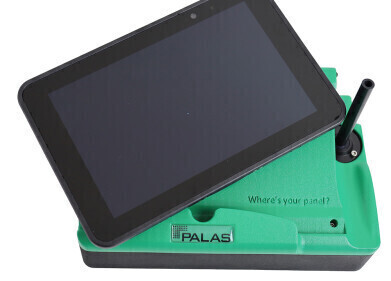Indoor air quality monitoring (IAQ)
New High Sense (HS) Sensor Strengthens MiniPID 2 Range
Mar 16 2018
The newest member of the MiniPID range, a highly sensitive sensor, capable of monitoring trace levels of VOCs over a long period of time making it ideal for air quality applications.
In response to the growing demand for reliable and accurate detection of a wide range of volatile organic compounds (VOCs) at extremely low levels, Ion Science - leading manufacturer of gas detection instrumentation for global occupational health and environmental monitoring applications – has developed a high sensitivity version of its MiniPID 2 sensor.
Ion Science’s ground-breaking MiniPID 2 HS PID sensor is 15 times more sensitive than the company’s existing MiniPID 2 parts per billion (ppb) sensor. It is capable of detecting trace levels of VOCs over a long period of time making it ideal for indoor air quality monitoring applications. It is also well suited to clean rooms, fence line monitoring, industrial hygiene, site soil and air sampling, fugitive emissions, volatile spills, law enforcement and emergency response.
Delivering a dependable response to thousands of VOCs across many diverse applications, the MiniPID 2 HS is a simple plug and play sensor providing a wide detection range of 0 to 4 parts per million (ppm) with sensitivity of 0.5 parts per billion (ppb).
Ion Science’s MiniPID 2 HS also features a re-designed, pneumatically sealed electrode stack for high sensitivity and a wide detection range. An innovative self-diagnostic feature indicates whether the electrode stack is contaminated or if the sensor is not operating correctly.
The MiniPID 2 HS incorporates Ion Science’s recently launched long-life eV lamp that offers 10,000 hours continuous operation as standard. Together with exceptional brightness and improved stability, this facilitates reliable detection of less volatile and less readily sensed compounds, over an extended period of time.
Duncan Johns, Ion Science’s Managing Director says: “Exposure to hazardous substances at work is a major contributor to ill health, and the loss to companies through absence and litigation is enormous. However, once a problem has been identified, indoor air quality can be significantly improved by installing proper air ventilation and ltration systems.
He continues: “The introduction of the new MiniPID 2 HS provides an effective opportunity to introduce extremely low-level VOC detection. It also gives stability, control and reliability advantages that are unavailable in other PID designs.”
Like Ion Science’s other market-leading sensors, MiniPID 2 HS incorporates patented Fence Electrode Technology which is proven to resist humidity and contamination for optimum detection of VOCs in challenging environments.
Amongst the benefits offered by Ion Science’s MiniPID 2 HS sensor are its low running current, robust lamp illumination, reliable operation at extreme temperatures and ease of serviceability.
The MiniPID 2 HS is designed for both diffusive and in-line pumped sampling, delivering an exceptional response time and clear down.
It boasts intrinsically safe certification and is ATEX, IECEx, II 1G Ex ia IIC T4 Ga accredited.
Digital Edition
AET 28.4 Oct/Nov 2024
November 2024
Gas Detection - Go from lagging to leading: why investment in gas detection makes sense Air Monitoring - Swirl and vortex meters will aid green hydrogen production - Beyond the Stack: Emi...
View all digital editions
Events
Jan 14 2025 Abu Dhabi, UAE
Jan 20 2025 San Diego, CA, USA
Carrefour des Gestions Locales de L'eau
Jan 22 2025 Rennes, France
Safety, Health & Wellbeing LIVE
Jan 22 2025 Manchester, UK
Jan 25 2025 San Diego, CA, USA



















